-
Gagnon, Charles (1934, Montreal–2003, Montreal)
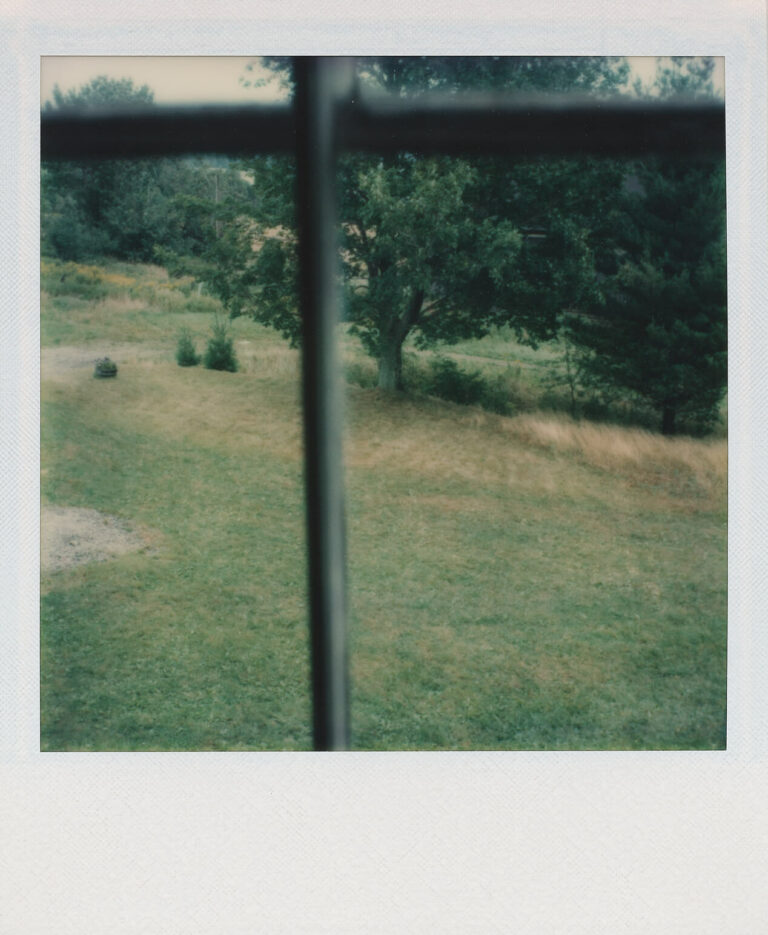
Gagnon was a multidisciplinary artist who worked in media such as painting, collage, film, and sound in addition to photography. Many of his photographs represent natural elements—gardens, trees, plants—as disconnected from viewers or their surrounding environments, such as his Polaroid SX-70 images of a view from a window overlooking a garden. In 1979 he was one of the seven photographers selected for The Banff Purchase exhibition, which championed contemporary Canadian photography and sought to establish the Banff Centre as an important site for the study of the art in Canada.
Image: Charles Gagnon, SX 70, 1976, instant dye print (Polaroid), 10.8 x 8.8 cm; image: 7.9 x 7.8 cm, National Gallery of Canada, Ottawa.
For further reading, see:
Asselin, Olivier. “Le flâneur et l’allégorie : fragments sur les photographies de Charles Gagnon.” Journal of Canadian Art History / Annales d’histoire de l’art Canadien 20, no. 1/2 (1999): 182–203.
Banff Centre, The Banff Purchase: An Exhibition of Photography in Canada. Toronto: John Wiley & Sons Canada, 1979.
Cousineau-Levine, Penny. Faking Death: Canadian Art Photography and the Canadian Imagination. Montreal and Kingston: McGill-Queen’s University Press, 2003, 76–78.
Godmer, Gilles, et al. Charles Gagnon. Montreal: Musée d’art contemporain de Montréal, 2001.
McManus, Karla. “Producing and Publishing The Banff Purchase: Nationalism, Pedagogy, and Professionalism in Contemporary Canadian Art Photography, 1979.” Journal of Canadian Art History / Annales d’histoire de l’art Canadien
36, no. 1 (2015): 77.
-
Gaudard, Pierre (1927, Marvelise, France–2010, France)
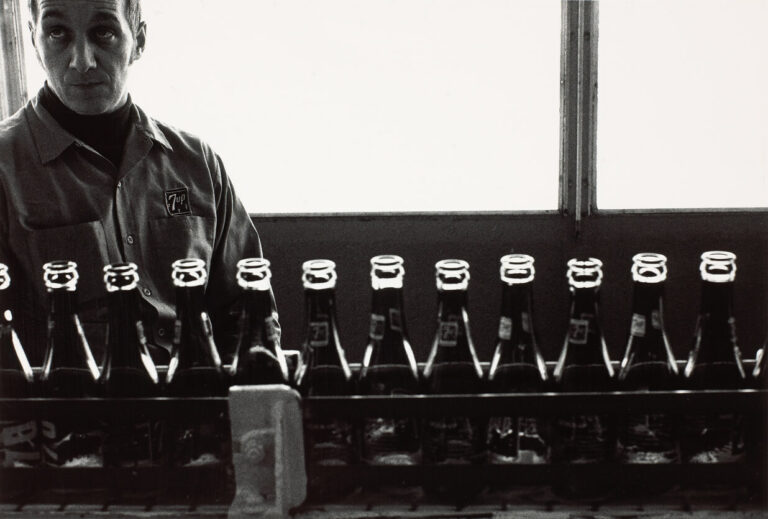
Gaudard immigrated to Montreal in 1952, where he established himself as a freelance photojournalist and documentary photographer. In addition to working for popular magazines such as Time, he produced work for the National Film Board of Canada (NFB). In 1963 a showing of Gaudard’s photographs of Mexico and Guatemala was one of the first presented by the NFB in its Ottawa gallery. His socially engaged projects such as Les ouvriers, 1969–71, and Les prisons, 1975–77, explore the experiences of factory workers and prisoners respectively. After four decades of living and working in Canada, Gaudard returned to France in the 1990s.
Image: Pierre Gaudard, 7-Up, Montreal, Quebec, 1970, gelatin silver print, 27.8 x 35.4 cm; image: 21.5 x 30.4 cm, CMCP Collection, National Gallery of Canada, Ottawa.
For further reading, see:
Dessureault, Pierre. “Pierre Gaudard: Documentary Photographer.” Ciel variable 88 (Spring 2011): 48.
Gaudard, Pierre. Les ouvriers. Ottawa: National Film Board, 1971.

-
General Idea (active 1969–1994, Toronto)
General Idea was established in Toronto in 1969 by three conceptual artists who went by the pseudonyms A.A. Bronson (Michael Tims, b.1946), Felix Partz (Ronald Gabe, 1945–1994), and Jorge Zontal (Slobodan Saia-Levy, 1944–1994). The trio lived and worked together for twenty-five years, producing multimedia works, installations, art publications (FILE, 1972–89), and events (Miss General Idea Beauty Pageant) that explored themes such as fame, glamour, sexuality, and the AIDS crisis. The photographs they produced were usually part of their larger projects. In 1974 General Idea founded Art Metropole, an artist-run centre that champions art publications in any media, including print and video works.
For further reading, see:
Art Metropole. “About Art Metropole,” 2020. artmetropole.com/about.
Smith, Sarah E.K. General Idea: Life and Work. Toronto: Art Institute of Canada, 2016.
-
Gibson, Tom (1930, Edinburgh, Scotland–2021, Montreal)
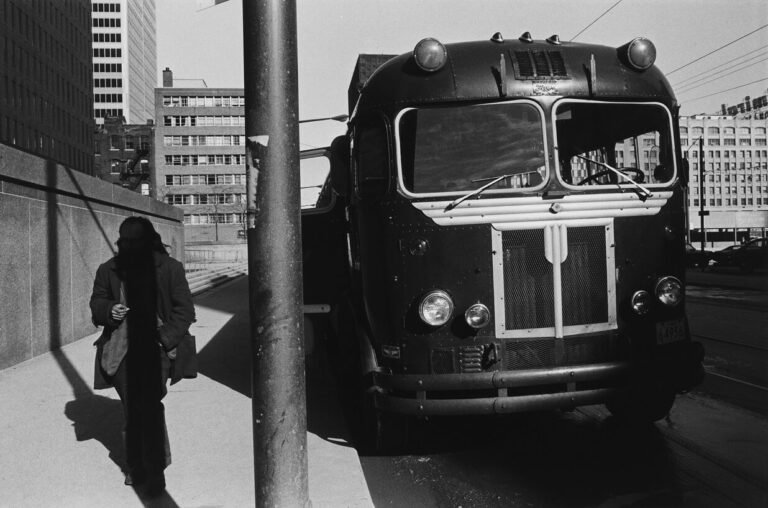
After a stint in the navy, Gibson immigrated to Canada, where he trained and practised as a painter in Toronto before turning to street photography in the late 1960s. Gibson was well connected both in Canada and the U.S. and showed his work in a major exhibition at the Canadian Museum of Contemporary Photography in 1993 and at the Art Gallery of Ontario in 2004. His early photographs of Pikangikum, a First Nations community in northern Ontario, and of Mexico are fairly straight documentary images whereas later works taken mostly in Toronto and Montreal are full of unusual angles and contrasts. The street photographs suggest an awareness of new directions in the work of American photographers such as Garry Winogrand and Nathan Lyons. Gibson taught in the studio art program at Concordia University from 1976.
Image: Tom Gibson, Man and Bus, 1974, gelatin silver print, 40.5 x 50.8 cm; image: 19.4 x 29.1 cm, CMCP Collection, National Gallery of Canada, Ottawa.
For further reading, see:
Langford, Martha. Tom Gibson: False Evidence Appearing Real = Des apparences trompeuses. Ottawa: Canadian Museum of Contemporary Photography, 1993.

-
Grant, Ted (1929, Toronto–2020, Victoria)
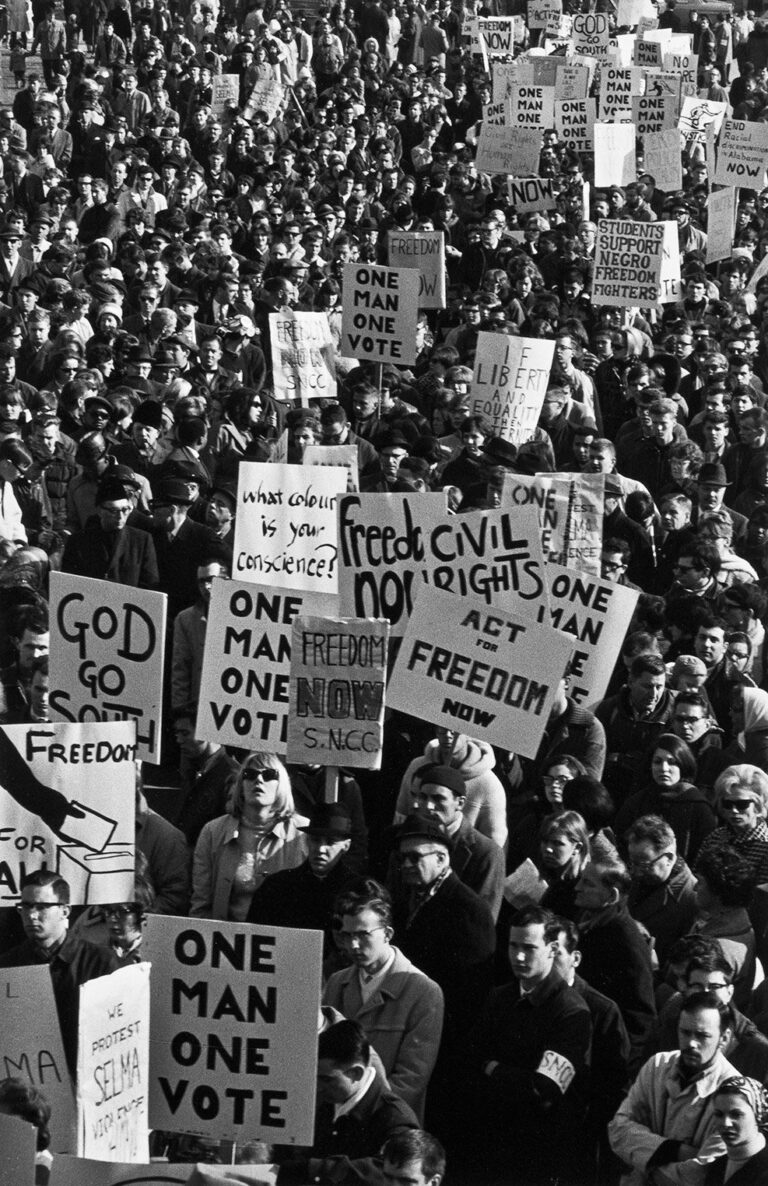
Grant began working as a photojournalist in 1951. During his long and prolific career as a freelancer, he photographed many key moments in twentieth-century history and was one of the first Canadian news photographers to use 35mm film. His best-known photographic series were often focused on medicine and sports, including a ten-year project on Dr. William Osler and coverage of numerous Olympic Games. As his career progressed, his photography was increasingly shown and collected in an art context, and his hundreds of thousands of images are held in the National Gallery of Canada and Library and Archives Canada.
Image: Ted Grant, Civil Rights March, Ottawa, 1965, printed 1995, gelatin silver print, 50.8 x 40.4 cm; image: 49.7 x 32.3 cm, CMCP Collection, National Gallery of Canada, Ottawa.
For further reading, see:
Grant, Ted. Doctor’s Work: The Legacy of Sir William Osler. Richmond Hill: Firefly Books, 2003.
Kunard, Andrea, and Carol Payne. “Ted Grant: The Storyteller.” National Gallery of Canada Magazine, August 6, 2020. www.gallery.ca/magazine/in-the-spotlight/ted-grant-the-storyteller.

-
Gupta, Sunil (b.1953, New Delhi)
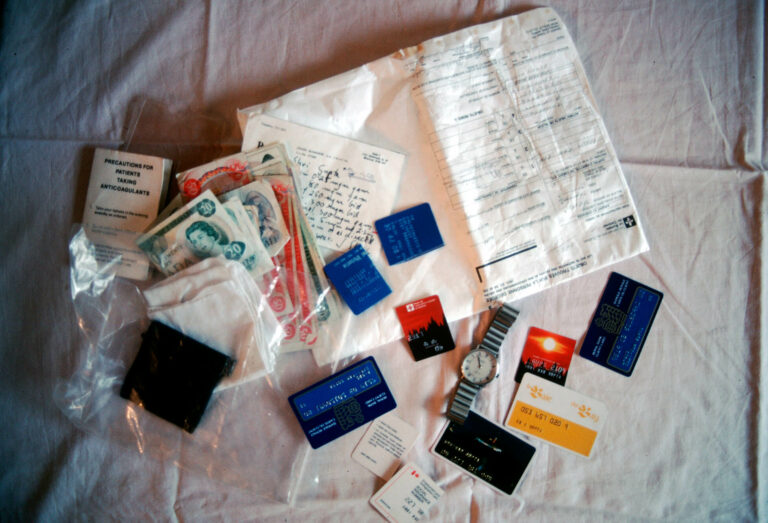
Gupta is an internationally renowned documentary photographer whose work explores issues of queer life, race, and migration. His family immigrated to Montreal when he was in high school. While he attended Dawson College and completed a degree in accounting at Concordia University, Gupta was an avid amateur photographer. He left for New York in 1976, studied photography with Lisette Model, and never returned to live in Canada. However, he has mined his snapshots of tumultuous Montreal in the 1970s for several important projects, including Social Security, 1988, which explored his family’s immigration experience, and Friends & Lovers: Coming Out in Montreal in the 1970s, 1970–75.
Image: Sunil Gupta, image from the series Social Security, 1988. © Sunil Gupta / DACS London / CARCC Ottawa 2023.
For further reading, see:
Dunster, Flora. “Do You Have Place? (Interview with Sunil Gupta).” Third Text 35, no. 1 (2021): 81–95.
Gupta, Sunil. Pictures from Here. London: Chris Boot, 2003.

-
Gutsche, Clara (b.1949, St. Louis, Missouri)
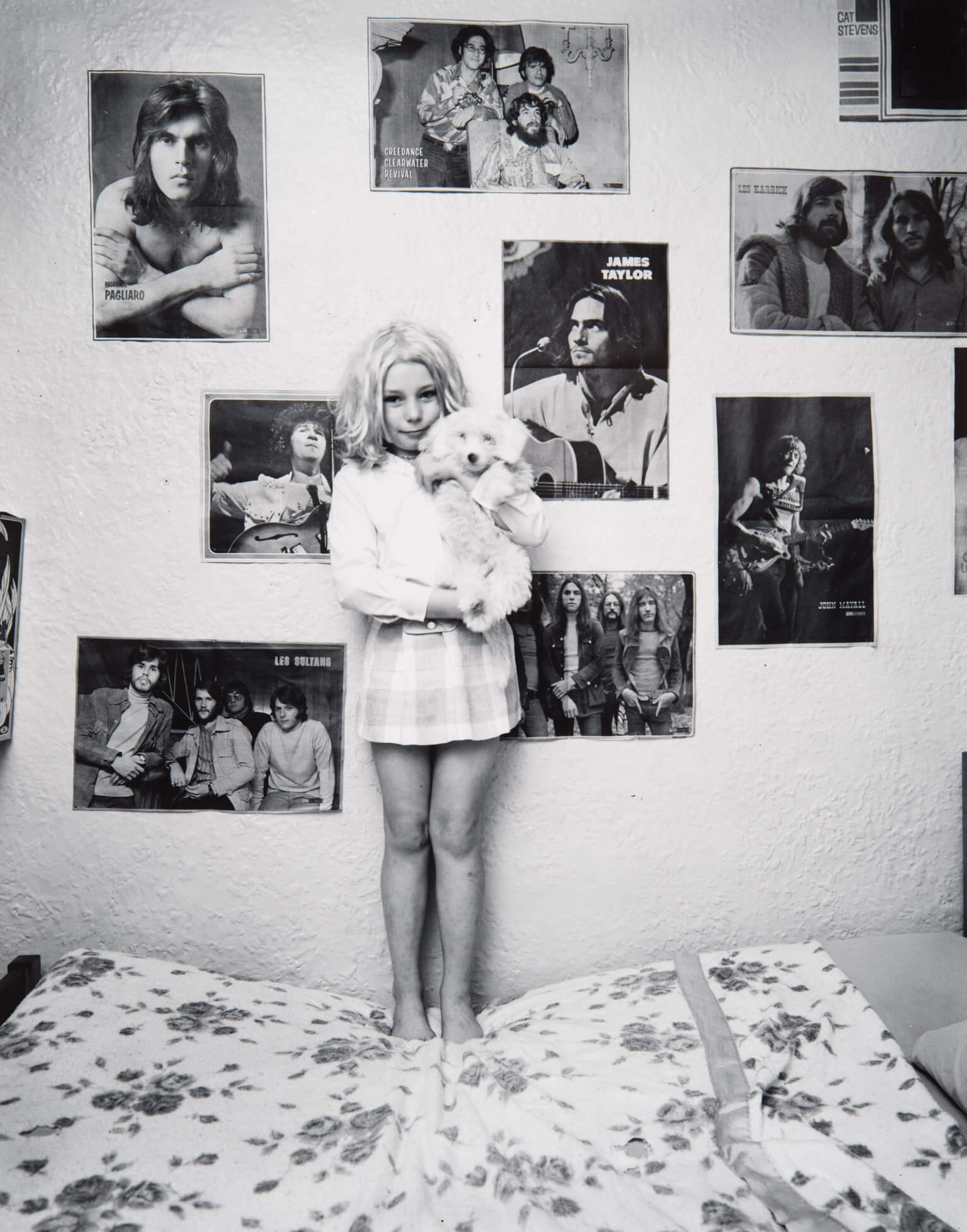
Gutsche immigrated to Canada from the U.S. in 1970. Her work often explores the relationship between people and their environments, and her series Milton Park, 1970–73, documents the destruction of a neighbourhood in Montreal that was cleared to make way for new development. In 1973 Gutsche helped found la Centrale Galerie Powerhouse, a feminist artist-run centre in Montreal. She teaches at Concordia University.
Image: Clara Gutsche, Janet Symmers, 1972, gelatin silver bromide print, selenium toned, 35.5 x 30 cm, Montreal Museum of Fine Arts. © Clara Gutsche / CARCC Ottawa 2023.
For further reading, see:
Phillips, Carol Corey. “Speaking through Silence: Female Voice in the Photography of Nina Raginsky, Clara Gutsche and Lynne Cohen.” In 13 Essays on Photography, introduction by Geoffrey James, 113–27. Ottawa: Canadian Museum of Contemporary Photography, 1990.
Viau, René. “Clara Gutsche.” Canadian Woman Studies 2, no. 3 (1980): 74.

-
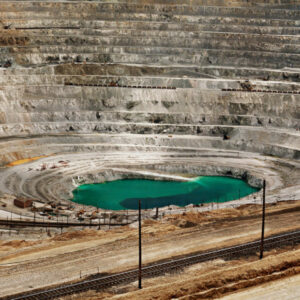 About the Authors
About the Authors
This book is written by art historians Sarah Bassnett and Sarah Parsons.
-
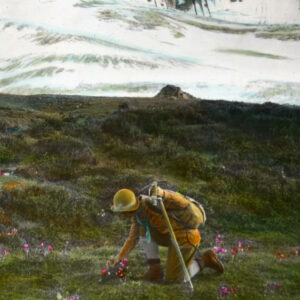 More Online Art Books
More Online Art Books
Read online or download the ACI’s incredible library of art books for free in French and English.
-
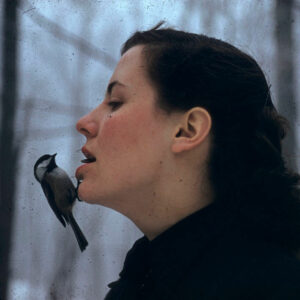 Preface
Preface
Photography has become so thoroughly integrated into our everyday experience that it may be hard to imagine life without it.
